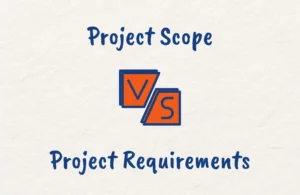Every project is initiated to realize benefits. These benefits which could be tangible or intangible must be defined and measured.
Whatever the desired benefits are, realizing them requires strategic and proper planning, especially with increasing project complexity.
Without proper planning, projects risk failure to meet objectives. However, with the right plan project teams can deliver measurable improvements.
To ensure benefits realization, an effective project benefits management plan is required. This plan outlines how the expected business benefits will be achieved and defines the path to business value.
In this article, we explain the concept of benefits management in project management, the role of a project benefits management plan in benefits realization, and how to create one.
What is Benefits Management in Project Management?
Benefits management is the process of defining, measuring, and achieving the business benefits resulting from project deliverables.
Benefits management focuses on realizing tangible and intangible improvements that provide value to stakeholders.
Effective benefits management aligns project outcomes with organizational strategy and objectives, and establishes clear metrics and success criteria for benefits. This drives project prioritization based on potential business impact.
Key activities in benefits management include:
- Identifying potential benefits during project initiation and planning using techniques like value engineering.
- Defining benefit owners responsible for achieving each benefit.
- Developing measures and tracking mechanisms for both financial and non-financial benefits.
- Creating benefit realization plans detailing how and when benefits will be achieved.
- Monitoring and controlling benefits during project execution to ensure successful delivery.
- Validating that benefits are realized and sustaining them during project closure.

What is a Benefits Management Plan?
The Project Management Book of Knowledge (PMBOK) Guide 6th Edition describes the project benefits management plan as “A document that describes how and when the benefits of the project will be delivered, and describes the mechanisms that should be in place to measure those benefits.”
It identifies the tangible and intangible benefits expected from the project and defines each benefit along with metrics to track its achievement, as well as the owners assigned to each of them.
The benefits management plan should be developed early in the project lifecycle and revisited and refined through execution to ensure the benefits are on track and improve clarity on the value to be delivered.
The goal of the benefits management plan is to enable you to gain alignment between the project and business needs which ultimately translates into improved bottom-line results.
A benefits management plan details:
- The timeline for achieving benefits, including short, medium, and long term.
- Baseline metrics to compare improvements against.
- Risks that could impact benefits delivery with mitigation approaches.
- Dependencies between benefits as well as linkages to project deliverables.
- Governance structures for benefits oversight and decision-making.
- Communications strategy to inform stakeholders of progress.
- Transition plans for handing over sustained benefits after project closure.

When is the Benefits Management Plan Created?
The benefits management plan is typically created prior to project initiation during the initial high-level planning phases of a project.
It is created after the project scope and key deliverables have been defined, but before detailed planning and execution begins.
The goal is to establish an early understanding of the intended benefits of the project so they can be tracked and influence future project decisions.
You should draft an initial benefits management plan before too many resources are committed to the project.
This allows you to confirm alignment around the reasons for undertaking the project and helps identify any changes needed to the project scope. The plan is then revised and expanded as the project progresses through its life cycle.
It becomes a living document that is reviewed and updated at key points such as after project deliverables, at stage gates, or when significant changes occur.

How to Write a Benefits Management Plan
To develop an effective project benefits management plan, follow these key steps :
1. Identify Benefits and Metrics
- Gather inputs from the business case, project charter, and stakeholders to determine expected improvements from the project.
- Define both tangible and intangible benefits like cost reductions, increased capacity, and improved customer satisfaction.
- Establish success criteria and metrics for each benefit to objectively measure performance.
2. Assign Benefit Owners
- Determine benefit owners responsible for achieving each benefit and obtain buy-in from them.
- Define their role in the execution, measurement, and sustainability of the benefit.
3. Outline Realization Plan
- Develop benefit realization plans describing how and when each benefit will be achieved.
- Link benefits delivery to project milestones, deliverables, and timelines.
- Identify risks and mitigation strategies.
4. Establish Governance and Reporting
- Determine governance structure and frequency of reviews for benefit monitoring.
- Create templates and schedules for benefit status reporting and tracking progress.
5. Update Through the Project Lifecycle
- Continuously update the benefits management plan as more clarity emerges through project planning and execution.
- Refine measures, owners, timelines, and risks as needed.

Key Elements of a Project Benefits Management Plan
A benefits management plan in project management should include the following:
1. Benefit Profiles
The benefits management plan should outline each expected benefit from the project and categorize them (e.g. tangible, intangible).
The success criteria and metrics to track achievement should be defined, and benefit owners responsible for realizing each benefit should be assigned.
2. Benefit Realization Plans
These plans describe how and when each benefit will be achieved. They link benefit delivery to specific project milestones and deliverables and outline the activities, resources, and timelines required to realize the benefits.
3. Risk Management
The benefits management plan should include identified and assessed risks that could impact successful benefit delivery, and mitigation strategies for high-priority risks.
4. Financial Analysis
Estimates of the financial value and required costs for each benefit along with calculated metrics like benefit-cost ratio and return on investment.
5. Governance Structure
This establishes clear roles and responsibilities for benefits oversight and the frequency of benefits reviews and reporting mechanisms.
6. Transition Planning
This details handover actions to transfer benefits to owners post-project and sustainment activities for benefits after closure are defined.
What is the Difference Between a Business Case and a Benefits Management Plan?
The business case and benefits management plan are key documents that serve complementary purposes when initiating a project.
Their differences include:
1. Purpose
The business case justifies undertaking the project by analyzing expected costs, benefits, risks, and alternative options. It seeks to answer the question “Should we do this project?”
In contrast, the benefits management plan goes into detail on how the benefits outlined in the business case will actually be achieved once the project is underway.
The plan focuses squarely on realizing benefits versus justifying the project by answering the question “How will we accomplish the expected benefits from this project?”
2. Scope
The business case takes a big-picture forest view, examining the proposed project holistically including an analysis of multiple options and scenarios.
The benefits management plan zooms in on the trees and provides an in-depth look at delivering each specific benefit expected from the project.
3. Timing
The business case provides the justification needed to get the project approved and funded and is developed during the early stages of project initiation before detailed planning occurs.
In contrast, the benefits management plan is created later as part of planning the approved project. With the project moving forward, detailed planning for benefits delivery can begin.
4. Metrics
The business case will often include high-level metrics for measuring benefit achievement which help to indicate expected improvements.
The benefits management plan takes these metrics to the next level by defining detailed baseline and success metrics for each benefit and establishing rigorous tracking mechanisms.

Benefits Management Plan PMP Exam Tips
When preparing for the PMP certification exam, it’s essential to understand the significance of the benefits management plan as outlined in the PMP exam content outline.
The plan is an input for the following project management processes:
- Develop Project Charter: The benefits management plan is a source of information about the project´s objectives and how the project will contribute to the business goals.
- Close Project or Phase: The benefits management plan assesses the project’s success in meeting its objectives.
- Determine Budget: The plan includes target benefits such as Net Present Value (NPV) calculations, timeframe for realizing benefits, and the metrics associated with the benefits.
- Plan Procurement Management: The benefits management plan indicates when specific project benefits are expected to be available, which influences procurement dates and contract language.
- Identify Stakeholders: The benefits management plan may identify the individuals and groups that will benefit from the delivery of the outcomes of the project and are thus considered stakeholders.
Key Takeaways
The reason why projects are created is to provide business value and deliver benefits defined in the business case and the benefits management plan.
An effective benefits management plan is essential to maximize the value of your projects. By outlining how benefits will be achieved, measured, and sustained, it connects project outcomes to business needs.
Whether tangible or intangible, defining benefits upfront drives strategic priorities and ongoing realization. With clear metrics and governance, benefits can be optimized across the project lifecycle.
FAQs
What Does Benefit Mean in Project Management?
A benefit in project management is defined as an outcome of actions or results that provide value to the sponsoring organization as well as to the project’s intended beneficiaries.
What is Benefits-based Management?
Benefits-based management focuses on defining, planning, and tracking the benefits of projects and programs to ensure that the desired outcomes and value are achieved and aligned with an organization’s strategic goals.
What is an Example of Benefits Management?
An example of benefits management is a company implementing a new IT system to streamline operations.
The benefits management process would involve identifying anticipated benefits like improved efficiency, cost reduction, and better customer service, then measuring and tracking these outcomes post-implementation to ensure they are realized.





